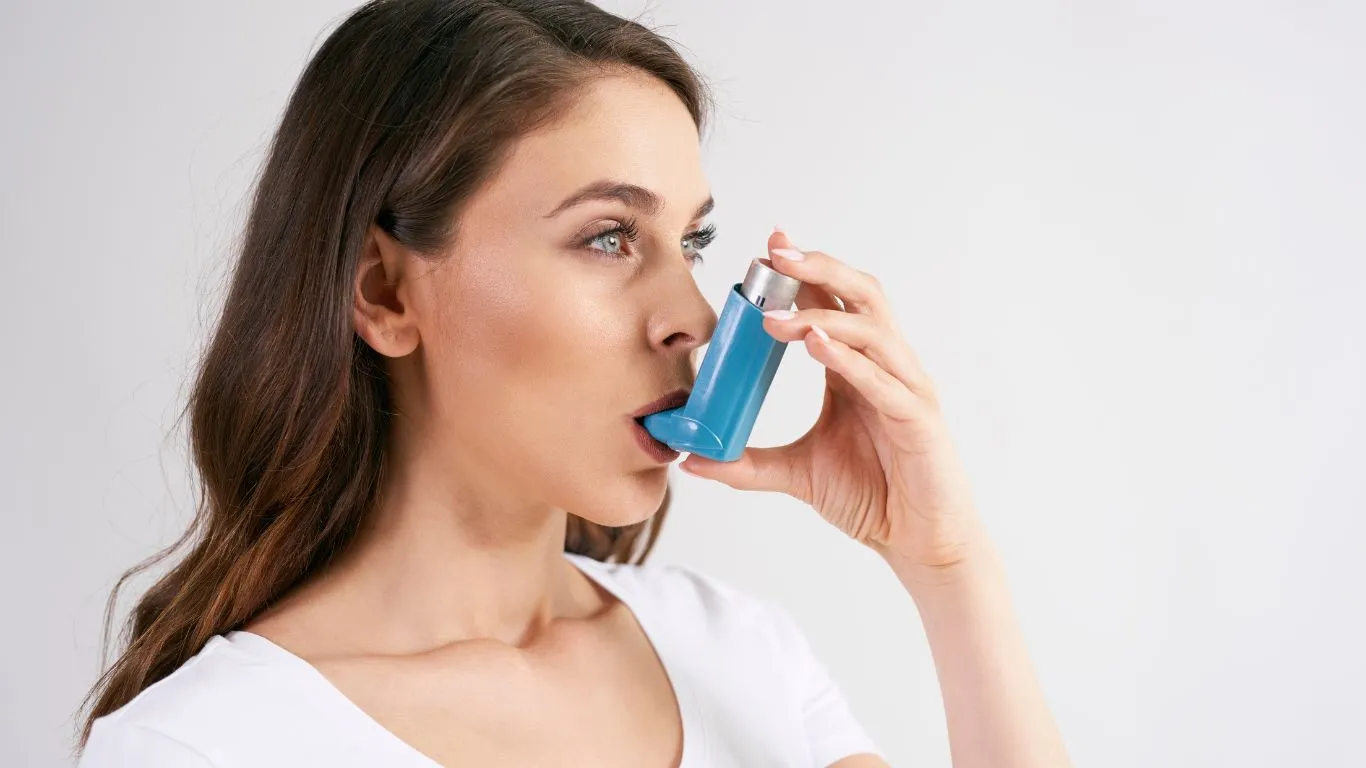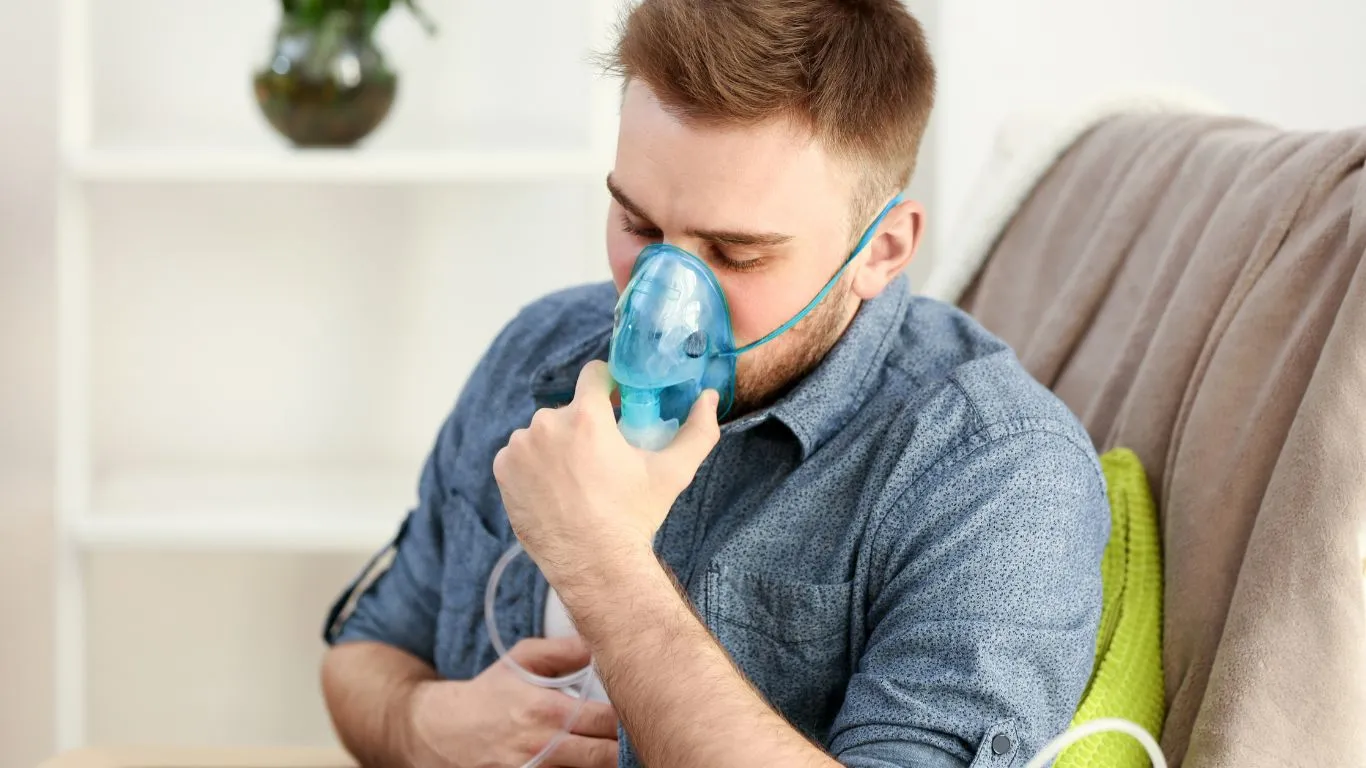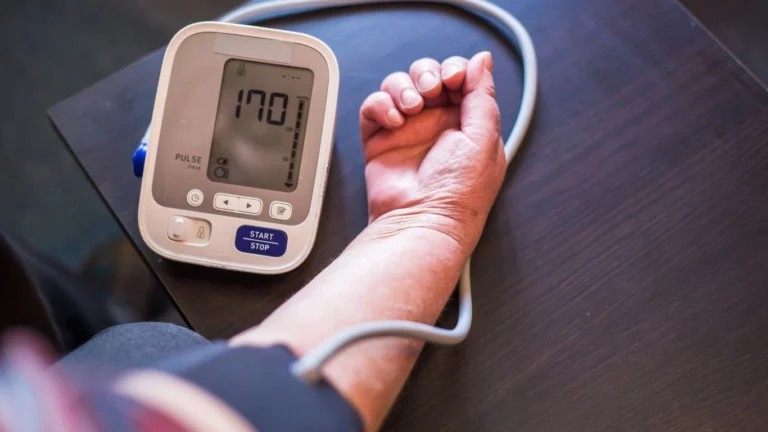Can Asthma Cause Chest Pain After Exercise? Key Insights to Manage It
Can asthma cause chest pain after exercise? This is one of the most common questions I get asked in my practice, especially by people who are trying to stay active but keep experiencing strange tightness or discomfort after a workout. And honestly, I get it—I’ve been in that exact situation before. Even as someone who specializes in respiratory health, I’ve found myself gasping for air on a morning jog, feeling a weird pressure in my chest, and wondering if it’s just overexertion… or something deeper related to my asthma.
Understanding the Link Between Asthma and Post-Exercise Chest Pain

Let’s be real for a sec—exercise is supposed to make us feel better, right? More energized, more alive. But for many of us living with asthma, especially exercise-induced asthma (which, yes, is a real and frustrating thing), the post-workout recovery can come with an unexpected downside: chest pain.
Now, I’m not just talking about the usual muscle soreness or that post-sprint burning in your lungs. I mean a deeper, tighter, sometimes even alarming kind of chest discomfort that can last longer than you’d expect. It’s a sign your respiratory system might be working overtime—and not in a good way.
What’s Actually Happening in Your Lungs During Exercise?
During physical activity, your body demands more oxygen. Your heart pumps faster, your lungs expand deeper, and your airways open up—unless you have asthma. In that case, your airways may actually narrow in response to the increased airflow, making it harder to breathe.
This bronchoconstriction can lead to a chain reaction of symptoms:
- Shortness of breath (even when you’re trying to cool down)
- Wheezing or noisy breathing
- Tightness in the chest, which often feels like something is squeezing or pressing inside
- Lingering coughing after your workout has ended
I’ve had patients describe it as feeling like “a weight sitting on their chest” or “like trying to breathe through a straw while someone’s bear-hugging you.” Sound familiar? You’re not imagining it. It’s a genuine response that can be directly linked to how asthma behaves under physical stress.
So… Can Asthma Cause Chest Pain After Exercise?
Yes, absolutely. In fact, it’s more common than most people think. Asthma-related chest pain after exercise typically stems from inflammation and airway constriction. When your airways are tight, your body struggles to get enough oxygen, leading to a sensation of pain, pressure, or discomfort in the chest. And the kicker? It doesn’t always happen right away. Sometimes, the pain can show up after you’ve finished your workout and think you’re in the clear.
Here’s a personal story—I used to think I just wasn’t “in shape enough.” I’d go for a light run and feel a sharp, jabbing sensation beneath my ribs when I stopped. I’d chalk it up to bad posture or not warming up properly. But turns out, my asthma wasn’t under control during exertion, and that delayed chest pain? Classic sign of exercise-induced bronchoconstriction (EIB).
Common Triggers and Why They Matter

It’s important to understand that asthma doesn’t exist in a vacuum. There are layers to what causes post-exercise chest pain, and knowing your triggers is crucial for managing it effectively. These are the usual suspects I see in my patients:
- Cold, dry air – One of the biggest triggers, especially during outdoor workouts in winter.
- Pollen or air pollution – Seasonal changes and poor air quality days can inflame the airways.
- Skipping a warm-up – Jumping straight into intense exercise can shock the system.
- Not using a rescue inhaler beforehand – Many people underestimate the importance of pre-treatment.
Each of these can increase your chances of having a flare-up that leads to chest pain. Personally, I can’t tell you how many times I’ve ignored the cold air factor, only to regret it halfway through my run. I learned (the hard way) that layering up and covering my mouth with a scarf or mask actually makes a world of difference.
Is It Dangerous? When to Be Concerned

Here’s the thing—not all chest pain is created equal. Some discomfort may be part of a normal asthma response, but if you ever feel severe, crushing, or radiating pain, or it’s paired with dizziness or nausea, you should absolutely seek immediate medical attention. Don’t chalk it up to asthma alone. Cardiac issues can mimic asthma symptoms, and it’s better to be cautious.
As a rule of thumb I share with my patients:
- If the pain is sharp but resolves with rest and inhaler use—it’s probably asthma-related.
- If the pain lingers, feels deep or heavy, or you’re having trouble breathing even while resting—get checked out ASAP.
Don’t tough it out. I’ve seen young, healthy athletes ignore these signs thinking they’re just “out of shape” or “pushing themselves.” That’s not bravery—it’s risky. Listen to your body. It usually knows when something’s off.
How to Differentiate Asthma-Related Chest Pain from Other Causes

Now that we’ve established that asthma can cause chest pain after exercise, the next big question is—how do you tell if what you’re feeling is truly asthma-related and not something else? This is especially important if you’re someone like me, who once brushed off chest discomfort after workouts thinking it was just a normal part of getting stronger.
Here’s a little breakdown I often give my clients:
- Asthma chest pain usually feels tight, like pressure building in the chest area.
- It may be accompanied by wheezing, coughing, and shortness of breath.
- It often improves after using a rescue inhaler or resting for a few minutes.
- It’s usually more noticeable when breathing in deeply or during cold-weather workouts.
Compare that to other types of chest pain:
- Heart-related pain might radiate to the arm, jaw, or back, and it can feel crushing or like burning.
- Muscle strain often feels sharp, especially when pressing on the affected area or during certain movements.
- GERD or acid reflux can mimic asthma but usually comes with a sour taste or burning sensation behind the breastbone.
One trick I tell people is to pay attention to how long the pain lasts and whether it changes with your breath or position. Asthma pain tends to ebb and flow with your breathing patterns, while other conditions might remain constant or worsen with exertion not tied to respiration.
How I Manage Asthma Symptoms During and After Workouts

Okay, let’s get into the practical stuff. If you’re anything like me, you don’t want asthma to control your life—or your workouts. There are ways to exercise smartly and minimize the chance of that annoying chest pain creeping in. Here’s how I personally stay ahead of it:
- Pre-treat with a bronchodilator: About 15–30 minutes before any workout, I use my short-acting inhaler. It’s a game-changer. Not optional for me—it’s a non-negotiable part of my warm-up routine.
- Warm up gradually: No jumping into high-intensity training right away. I ease in with light walking or dynamic stretching, letting my lungs acclimate to the increased demand.
- Stay hydrated: It sounds basic, but dry airways are cranky airways. I drink water before, during, and after my workout.
- Wear a scarf or mask in cold weather: Helps warm and humidify the air before it hits my lungs. It may look a little odd, but my lungs thank me for it.
- Listen to my body: If I start feeling chest tightness, I pause. I never push through it—been there, regretted that.
When I share these strategies with patients, there’s always a moment of relief, like, “Oh, I don’t have to give up running or dancing or hiking.” No, you absolutely don’t. Asthma management is more about working with your body, not against it.
Creating an Asthma-Friendly Fitness Routine

So, how do you build a fitness plan that won’t leave you clutching your chest at the end of a workout? Here’s what I recommend, both as a specialist and as someone who’s lived it:
1. Pick the Right Activities
Not all workouts are created equal when it comes to asthma. Here are some that tend to be more lung-friendly:
- Swimming: The warm, moist air in pools is fantastic for soothing the airways. Just watch out for chlorine sensitivity.
- Walking or hiking: Low-impact, easy to control your pace, and super grounding for your nervous system.
- Cycling: As long as you’re not exposed to high pollution areas, this can be a solid cardio option.
- Yoga and Pilates: These focus on breath control, flexibility, and core strength—all great for managing asthma.
2. Avoid Common Pitfalls
Even the best-laid plans can go sideways if you’re not aware of a few common traps:
- Skipping a cooldown: Easing out of your workout is just as important as easing in.
- Ignoring early symptoms: That little tickle in your chest? Don’t ignore it. Address it before it escalates.
- Relying only on medication: Meds are important, but so is lifestyle—diet, sleep, and stress all affect your asthma control.
And please, don’t fall into the mindset of “I’ll just push through it.” I’ve been there. I once finished a workout gasping, doubled over on the sidewalk, because I didn’t want to “seem weak.” That was a turning point for me. Now I train smarter, not harder—and I’m in better shape than I ever was trying to prove something.
When to Talk to a Specialist
If you’re frequently asking yourself, “Why does my chest hurt after I exercise?” and you already have an asthma diagnosis, it might be time for a deeper look. Sometimes what we think is “normal” is actually a sign that our treatment plan needs adjusting.
Here are a few red flags that should push you to consult with a specialist (like, say, someone like me!):
- You’re using your rescue inhaler more than twice a week during workouts
- You avoid physical activity because of fear of flare-ups
- You experience nighttime symptoms after exercising earlier in the day
- You’ve had an asthma attack during or shortly after a workout
A lot of people think once you’ve got a diagnosis and an inhaler, you’re good to go. But asthma is dynamic—it changes with your environment, your stress levels, even your hormones. What worked last year might not cut it this year. I often do follow-ups with patients every 3–6 months just to stay ahead of any changes. That’s how we stay proactive instead of reactive.
Long-Term Strategies to Prevent Chest Pain After Exercise with Asthma

So we’ve talked about recognizing the symptoms and making your workouts more asthma-friendly, but what about the long game? What really makes a difference in preventing that annoying—and sometimes scary—chest pain after exercise caused by asthma over the long haul?
From my own experience and what I’ve seen over the years with patients, the answer lies in consistency. Managing asthma isn’t just about responding to flare-ups—it’s about getting ahead of them. It’s a lifestyle. You want to create an environment where your lungs can actually thrive, not just survive.
1. Keep Your Asthma Action Plan Updated
Sounds simple, right? But you’d be surprised how many folks forget about their asthma action plan after their initial diagnosis. This is your go-to guide for what to do when symptoms flare up—and when they’re under control.
I always encourage people to revisit their plan at least twice a year, or anytime their routine changes (like moving cities, switching gyms, or even after a rough allergy season). An updated plan means you’re not scrambling when your chest starts to tighten mid-workout. You already know what steps to take—and more importantly, when to take them.
2. Build a Lung-Friendly Lifestyle
This is where the E-E-A-T principles really kick in. As an expert who’s worked with hundreds of patients—and managed my own asthma since my early 20s—I can tell you it’s not just about what you do in the gym. It’s what you do between workouts that counts just as much.
- Nutrition: Anti-inflammatory foods like leafy greens, berries, turmeric, and omega-3-rich fish can actually reduce the inflammation in your airways over time.
- Sleep hygiene: Poor sleep increases your cortisol levels and weakens your immune system—both bad news for asthma control.
- Stress management: Breathing exercises, journaling, meditation—find what works for you. Stress tightens the chest and triggers symptoms in sneaky ways.
I’ll be honest—there were months where I felt like I had everything under control… until stress hit me like a freight train and suddenly even climbing stairs became a challenge. It taught me that self-care isn’t optional when you’re living with asthma.
3. Monitor Air Quality and Environmental Triggers
This is a big one I often stress to my patients: the air you breathe matters just as much as your medication. Poor air quality can lead to lingering symptoms, especially after exercise when your lungs are already taxed.
- Check air quality daily using apps or websites like AirNow
- Exercise indoors on high-pollen or smoggy days
- Use HEPA filters at home and avoid strong chemical cleaners
There was a time I lived near a major freeway and couldn’t figure out why I was having daily flare-ups—until I started tracking local pollution data. After moving just a few miles away, my symptoms dramatically improved. Lesson learned: environment counts.
Working with Your Healthcare Team

If there’s one thing I emphasize more than anything else, it’s this—you don’t have to figure this out alone. Working closely with a knowledgeable, empathetic healthcare provider can make all the difference. Whether it’s a pulmonologist, allergist, or primary care doc, having someone in your corner who understands both the science and your personal journey is essential.
Here are some key questions to bring up at your next appointment:
- Should I be using a different type of inhaler before or after workouts?
- Is there a chance my chest pain isn’t asthma-related?
- Can we run a spirometry or FeNO test to check my inflammation levels?
- What lifestyle changes could make the biggest impact for me?
And if your provider brushes off your symptoms or doesn’t take your concerns seriously, don’t be afraid to get a second opinion. Your breath is too important to settle for mediocre care.
Can Asthma Cause Chest Pain After Exercise? Final Thoughts
By now, we’ve covered a lot—and I hope it’s helped you feel a little less alone and a whole lot more empowered. To circle back to the original question: Yes, asthma can absolutely cause chest pain after exercise. But with the right tools, strategies, and mindset, it doesn’t have to stop you from living a full, active, and vibrant life.
From personal experience, I’ve learned that it’s not about being perfect—it’s about being prepared. It’s knowing your body, trusting your instincts, and staying consistent with the little things that make a big difference over time.
So go ahead—lace up those shoes, take that yoga class, or hit the hiking trail. Just be smart, stay informed, and remember that you’re not alone on this journey.
References
- Centers for Disease Control and Prevention (CDC)
- American Lung Association
- Mayo Clinic
- WebMD
- National Heart, Lung, and Blood Institute
Disclaimer
This article is for educational and informational purposes only and is not intended as medical advice. Always consult with your healthcare provider before making changes to your asthma treatment plan or exercise routine. Individual experiences with asthma vary widely, and what works for one person may not be appropriate for another.

Bianca Nala is a compassionate Nurse Practitioner with a strong background in primary and respiratory care. As a health writer for Healthusias.com, she combines her clinical expertise with a talent for clear, relatable storytelling to help readers better understand their health. Bianca focuses on topics like asthma, COPD, chronic cough, and overall lung health, aiming to simplify complex medical topics without losing accuracy. Whether she’s treating patients or writing articles, Bianca is driven by a single goal: making quality healthcare knowledge accessible to everyone.






